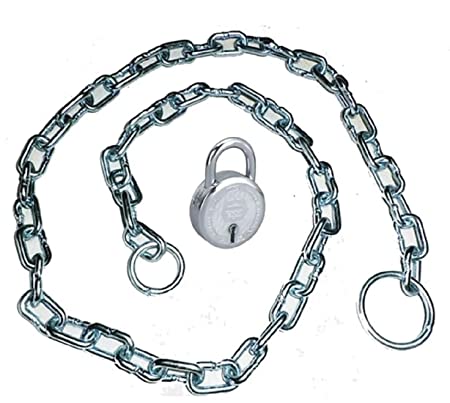
An Alexa lock allows you to remotely control the door, or even unlock it by speaking. They can be controlled by voice commands, and are compatible with WiFi. Each one has different features, so you can choose a lock to match your home decor. You can choose one that will lock or unlock your door via your smartphone depending upon the style of home.
Schlage Sense
The Schlage Sense door locks are compatible with Siri and Amazon Alexa. The Schlage Connect is a very similar lock design, but the interior is smaller. The Schlage Sense also connects to Apple's HomeKit, which means you can control it with Siri and the Home app. The smart lock also works with other Z-Wave devices, such as the Wink smart home hub and the SmartThings smart home hub.
The Sense model includes a touchscreen keypad with backlighting and a backlit keypad. Because the screen is backlit, you have to be very careful when pressing the button. The wrong button will register the first digit in your password so be extra cautious. To illuminate the keypad in the event of an error, you can use the Schlage logo. The keypad's brightness isn't as bright as the Schlage Connect Smart Deadbolt so it's not suitable for direct sunlight.
August Smart Lock Pro
The August Smart Lock Pro is a groundbreaking security solution. Its remote access feature allows you to monitor who comes and goes at your home. You can keep the lock you already have and only replace the sensor when your door opens. It has Auto-Lock/Auto-Unlock which allow you to identify who is at your front door without actually opening it.

August's door lock installation and use is simple. It measures only 3.4 inches across and 2 inches deep. The device attaches to an existing deadbolt and can be controlled via voice or app. The August Smart Lock Pro supports Apple Siri, Amazon Alexa, Google Assistant and more. Simply install the lock on your door, install the August app, and then open and close it using your voice.
Alfred Smart Lock
The Alfred Smart Lock series of door locks features many options, including easy access and security features. These lock systems are compatible with Bluetooth connectivity and have no moving parts. They are compatible with Bluetooth connectivity and offer One-Touch, Z-wave, and key override. The Alfred Smart Lock family also includes entry-level touchscreen motorized deadbolt locks.
The Alfred Door Lock connects to your smartphone using Bluetooth technology and allows you to unlock your doors with up to 20 unique key codes. It supports two-way communication via the Alfred Bluetooth app. The app lets you control everything about your door: from locking and unlocking it remotely, to tracking entry. Alfred's DB1 model also offers an emergency key entry function.
U-Bolt Pro
Ultraloq U-Bolt Pro is equipped with a fingerprint scanner that is extremely precise. It can detect a fingerprint in any angle in less that 0.4 seconds. It can also recognize up to 120 fingerprints. This is a great tool for protecting your home. You can even set a personal code for easy access. U-Tec apps are also supported by the lock. This app allows you to manage users, monitor activity, and more. Magic Shake is also available to unlock your doors.
This door lock can also be controlled remotely via an Apple Watch (or a smartphone). You can also control it using voice commands and a touchscreen. This makes it very easy to use and prevents people from looking in. The lock will automatically open and close when the door is closed. If your Apple Watch or smartphone recognises it, it will then open automatically.

Schlage Connect Smart Deadbolt
The Schlage Connect Smart Deadbolt works with Amazon Alexa. The connection between these systems allows you lock and unlock your doors by speaking directly to the lock. You can control the deadbolt with your voice. The deadbolt works even without an Internet connection. You can also use the touchscreen to manage access codes. A home automation hub allows you to control the lock remotely.
Schlage Connect Smart Deadbolt works with many smart homes systems and is easy-to-install. It is powered by 4 AA alkaline batteries, which can last up to a whole year if it is used every day. You can easily change the batteries in the lock by simply unplugging the cable that connects it to the battery holder. The procedure is simple and will take you less than a minute.
FAQ
What is the best home security program?
ADT Pulse and Ring Alarm are the most popular home security system. Vivint Smart Security Home Security and Protect America are also very popular.
How do I choose between different types of home security systems?
You need to think about the potential threats that your area faces. You might consider installing an alarm system that sounds when someone enters your house. You may not need as much security if you live in rural areas with few burglaries.
It is also worth considering whether you are willing and able to pay more for certain features. Some systems have cameras built-in, others don't. Some systems allow you to remotely monitor your home, while others require that you be present to view the footage.
What is the most trusted home security system available?
The number one home security system is the Ring Video Doorbell Pro. It allows you to see and speak to anyone at anytime from anywhere using your smartphone. You can also capture video and send it to family and friends by text message or email.
Do motion sensors have alarms
Since the beginning of time, motion sensor alarm systems have been in use for decades. However, they are becoming more popular as a result of increasing theft and break-ins. These devices are expensive and don't work well in cabinets. A motion sensor alarm system can be a great way to protect your home against intruders.
Can ADT hackable?
ADT security is the oldest home alarm system available. Many consumers still consider ADT Home Security System to be the safest choice. Its reputation as a trustworthy company that protects homes against burglary and fire is what they trust.
As with all things, hackers can compromise even the most trusted organizations. Hackers are able to infiltrate networks at any moment and steal sensitive information. If a hacker manages to infiltrate your network, they can access everything on the computer and modify the important settings. Hackers can change passwords and delete files. It's important for you to remember that hackers could still try to access your house by stealing files, changing passwords, or deleting files. Protect your systems with the information you need.
Are there any real reasons to have a home alarm system?
Home security is essential for everyone who lives in a home. You don't have to be worried about a burglar breaking into your home. They can steal anything, including valuable jewelry and expensive electronics. If you don't lock the doors, they can just take everything.
Home security systems can help protect your home by notifying you when something happens. You can view the recorded footage and receive alerts from your mobile device when motion is detected.
You don't have to invest in a sophisticated home security system if you prefer not to. A simple DIY camera will do the trick. These devices can be used to monitor who is at your front door as well as send you notifications when someone enters or leaves. They won't stop burglars from entering your home.
Statistics
- Depending on your insurance, 24/7 professional monitoring may qualify you for as much as 15% off your premium. (safewise.com)
- Related questionsHome security systems that are 100% DIY (safewise.com)
- Most home security companies will charge you around 75% of the remaining term of your contract if you cancel early—and some require 100%.Related questionsWhat type of contract length can I expect from security providers?Home security system cancellation (safewise.com)
- (In my experience, the discount on my home insurance covered about 25 percent of the subscription of an average plan, but your mileage may vary depending on your location and the size of your home.) (theverge.com)
External Links
How To
How to Install a Home Security System
A home security alarm is a device that monitors the property and alerts you in case of any suspicious activity. It could be a motion sensor, doorbell camera, smoke detector, fire alarm, flood alert, carbon monoxide detector, burglar alarm, etc. A home security package usually includes one or more sensors (e.g. a motion detector), which send signals whenever they detect sound or movement. The signals are then sent out to a control board where they can monitored and recorded. If there's something wrong, like someone breaking into your house, the control panel sends out an alert to your phone, tablet, computer, or voice assistant. You'll be able to immediately take action and know exactly what's happening.
The first step to installing a home security system is choosing the right type of sensors for your home. There are two main types: passive and active sensors. Passive sensors don’t require batteries. They only pick up sounds, vibrations and other signals from their environment. These include buzzers, sirens and doorbells. Active sensors transmit data by using electricity. This type of sensor can be found in cameras and motion sensors.
There are many different brands of sensors available today. Each brand comes with its own pros and cons. Some sensors can withstand extreme weather conditions, while others cannot. Some come with built-in speakers so you can hear them even if they're outside. Some only work indoors. Some are simple, while others offer advanced features such as night vision.
After selecting the right sensors for your property and deciding on a manufacturer, you will want to make a selection. This will ensure that all your sensors work together. Your local hardware store should have plenty of options to choose from.
Once you've chosen a brand of sensors, you'll need to decide how many you want to buy. Depending upon whether they live alone or in a group, most people begin with one or two sensors. However, if you plan to add additional sensors later, you might consider buying extra than you think you'll need now.
Next, consider where you want to put your sensors. Do you want them close to doors or windows? Or do you prefer having them hidden away? Make sure you get permission before placing them around your property. You should also ensure that they don't interfere with electrical outlets or other property features.
Now that you know the exact location of your sensors you will need a connection to your control board. A power adapter or battery package may be required depending on your setup. Once you have everything set up, you'll be ready to monitor your property!